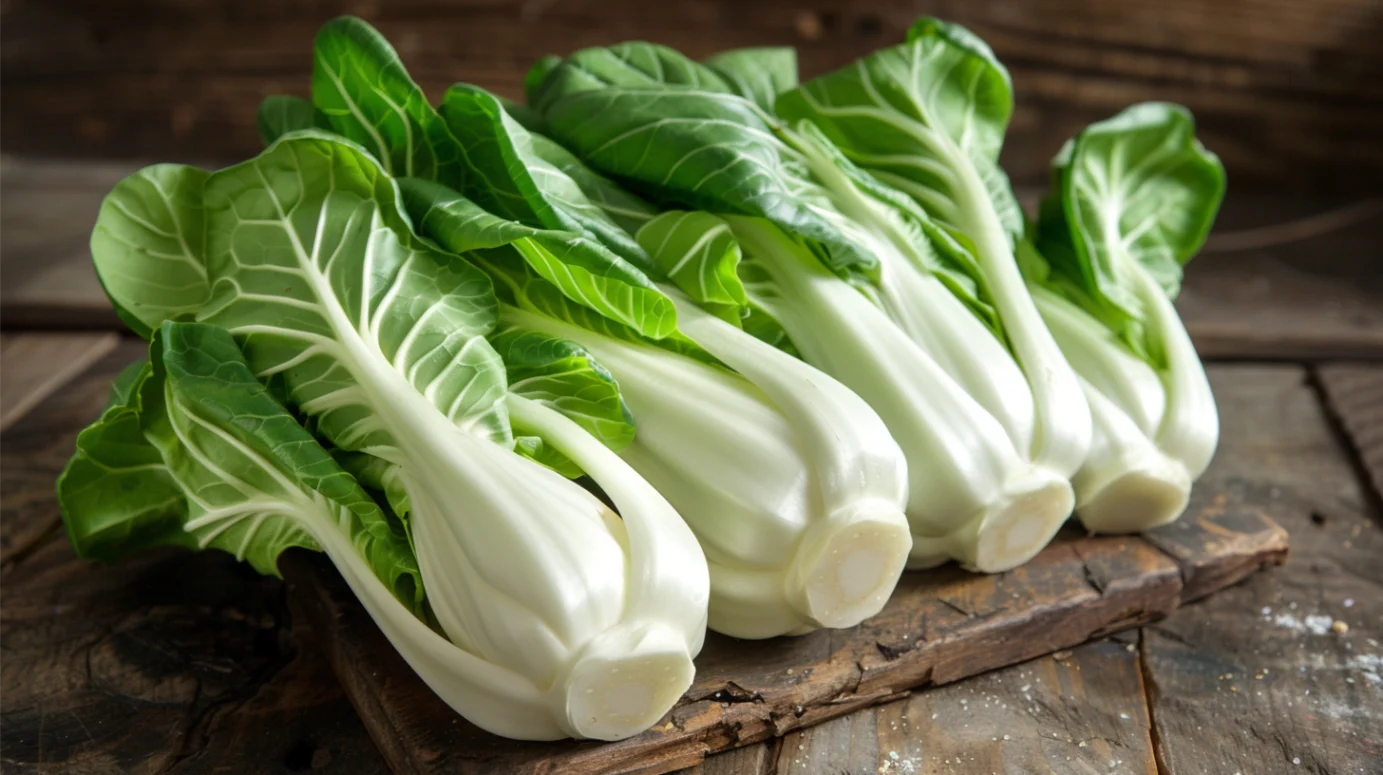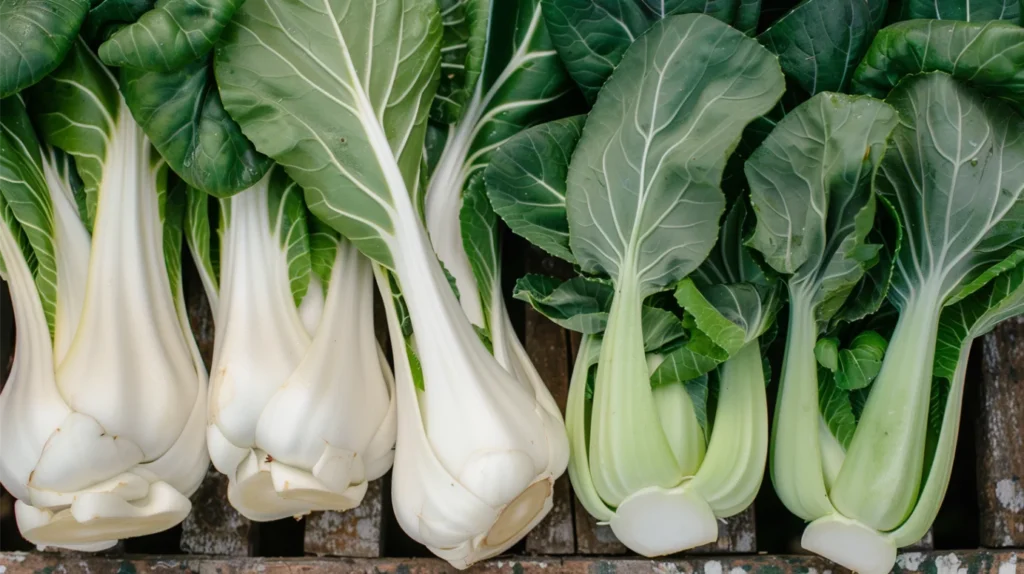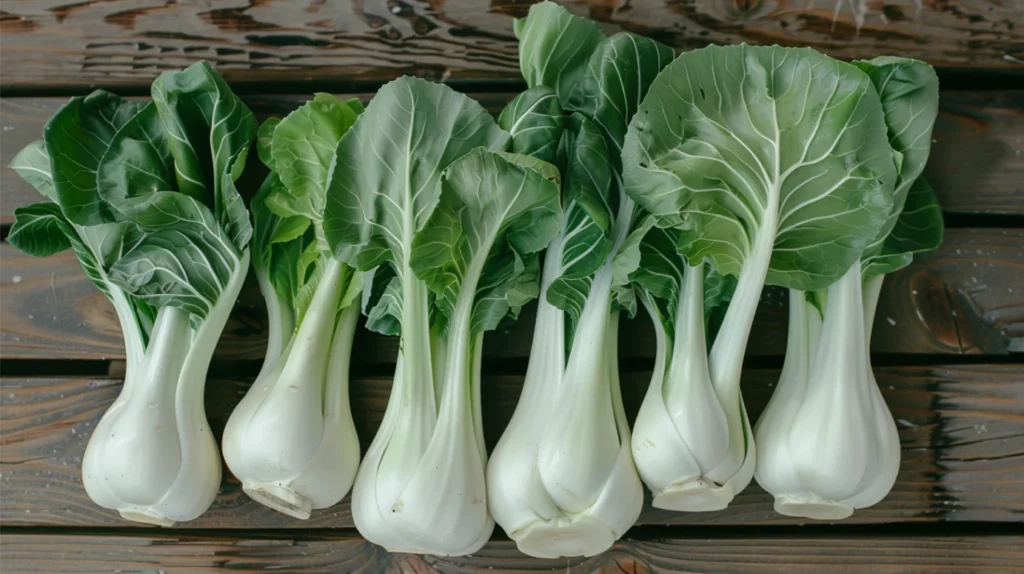The Ultimate Guide to Bok Choy: Mature vs. Baby Bok Choy

Bok choy, also known as pak choi or Chinese white cabbage, is a versatile and nutritious vegetable that has been a staple in Asian cuisine for centuries. With its mild, slightly sweet flavor and crisp texture, bok choy is a favorite among health-conscious consumers and culinary enthusiasts alike. In this ultimate guide, we’ll explore the differences between mature and baby bok choy, their nutritional benefits, and how to incorporate them into your cooking.
What is Bok Choy?
Bok choy is a member of the Brassica family, which includes other cruciferous vegetables like broccoli, cauliflower, and kale. It features smooth, dark green leaf blades with thick, white stalks that form a cluster resembling celery. Bok choy is low in calories and packed with essential vitamins and minerals, making it an excellent addition to a healthy diet.
Mature Bok Choy

Mature bok choy, also referred to as regular or full-sized bok choy, typically measures between 10 to 12 inches in length. It has a more robust flavor compared to baby bok choy and holds up well in various cooking methods, such as stir-frying, braising, and steaming.
Characteristics of Mature Bok Choy
- Larger, more mature leaves and stalks
- Slightly bitter and more pronounced flavor
- Firmer texture that withstands longer cooking times
- Ideal for dishes that require a heartier vegetable
How to Prepare Mature Bok Choy
- Rinse the bok choy thoroughly under cold running water to remove any dirt or debris.
- Trim off the base of the bok choy, keeping the leaves and stalks intact.
- Separate the leaves and stalks, as they cook at different rates.
- Cut the stalks into uniform pieces for even cooking.
- Roughly chop the leaves, as they will wilt down during cooking.
Cooking Methods for Mature Bok Choy
- Stir-frying: Heat oil in a wok or large skillet, add garlic and ginger, then stir-fry the bok choy stalks for 2-3 minutes before adding the leaves. Cook until the leaves are wilted and the stalks are tender-crisp.
- Braising: Sauté garlic and ginger in oil, add the bok choy stalks and leaves, pour in a small amount of broth or water, cover, and simmer until the bok choy is tender.
- Steaming: Place the bok choy in a steamer basket over boiling water, cover, and steam for 3-5 minutes until the stalks are tender-crisp and the leaves are wilted.
Baby Bok Choy

Baby bok choy, as the name suggests, is a younger version of the mature vegetable. It is harvested earlier, resulting in smaller, more tender leaves and stalks. Baby bok choy has a milder, slightly sweeter flavor compared to its mature counterpart and requires less cooking time.
Characteristics of Baby Bok Choy
- Smaller, more delicate leaves and stalks
- Milder, sweeter flavor
- Tender texture that cooks quickly
- Perfect for quick-cooking methods and raw applications
How to Prepare Baby Bok Choy
- Gently rinse the baby bok choy under cold running water.
- Trim off the base, keeping the leaves and stalks intact.
- If desired, cut the baby bok choy in half lengthwise or leave whole for a more visually appealing presentation.
Cooking Methods for Baby Bok Choy
- Stir-frying: Heat oil in a wok or large skillet, add garlic and ginger, then stir-fry the baby bok choy for 1-2 minutes until the leaves are wilted and the stalks are tender-crisp.
- Steaming: Place the baby bok choy in a steamer basket over boiling water, cover, and steam for 2-3 minutes until the leaves are wilted and the stalks are tender-crisp.
- Raw applications: Thinly slice the baby bok choy and add it to salads or use it as a fresh, crunchy topping for sandwiches and tacos.
Nutritional Benefits of Bok Choy
Both mature and baby bok choy are highly nutritious and offer an array of health benefits. Here are some of the key nutrients found in bok choy:
- Vitamin A: Essential for maintaining healthy vision, skin, and immune function.
- Vitamin C: A powerful antioxidant that supports collagen production and boosts immunity.
- Vitamin K: Crucial for blood clotting and maintaining strong bones.
- Folate: Vital for DNA synthesis and fetal development during pregnancy.
- Calcium: Important for building and maintaining strong bones and teeth.
- Potassium: Helps regulate blood pressure and supports proper muscle and nerve function.
- Fiber: Promotes digestive health and helps maintain a feeling of fullness.
Bok choy is also low in calories and contains phytochemicals like sulforaphane and indole-3-carbinol, which have been shown to have anti-inflammatory and cancer-fighting properties.
Bok Choy Recipes
Now that you understand the differences between mature and baby bok choy, it’s time to put your knowledge to use in the kitchen. Here are a few delicious recipes that showcase the versatility of this incredible vegetable:
Garlic Ginger Bok Choy Stir-Fry
Ingredients:
- 1 lb mature bok choy, stalks and leaves separated and chopped
- 2 tbsp vegetable oil
- 3 cloves garlic, minced
- 1 tbsp ginger, grated
- 2 tbsp soy sauce
- 1 tsp sesame oil
- Salt and pepper to taste
Instructions:
- Heat the vegetable oil in a wok or large skillet over medium-high heat.
- Add the garlic and ginger, stirring constantly for 30 seconds until fragrant.
- Add the bok choy stalks and stir-fry for 2-3 minutes until they start to soften.
- Add the bok choy leaves, soy sauce, sesame oil, salt, and pepper. Stir-fry for an additional 1-2 minutes until the leaves are wilted and the stalks are tender-crisp.
- Serve hot as a side dish or over rice for a complete meal.
Baby Bok Choy and Quinoa Salad
Ingredients:
- 4 cups baby bok choy, thinly sliced
- 2 cups cooked quinoa
- 1 cup cherry tomatoes, halved
- 1/2 cup red onion, thinly sliced
- 1/4 cup fresh cilantro, chopped
- 2 tbsp olive oil
- 2 tbsp lime juice
- 1 tsp honey
- Salt and pepper to taste
Instructions:
- In a large bowl, combine the sliced baby bok choy, cooked quinoa, cherry tomatoes, red onion, and cilantro.
- In a small bowl, whisk together the olive oil, lime juice, honey, salt, and pepper to make the dressing.
- Pour the dressing over the salad and toss to combine.
- Serve chilled or at room temperature as a refreshing and healthy lunch or side dish.
Conclusion
Bok choy, whether mature or baby, is a nutrient-dense and flavorful vegetable that deserves a place in your kitchen. By understanding the differences between the two varieties and learning how to prepare and cook them, you can create a wide range of delicious and healthy dishes that will impress your family and friends. So next time you’re at the grocery store or farmers market, be sure to pick up some bok choy and start experimenting with this incredible ingredient!





